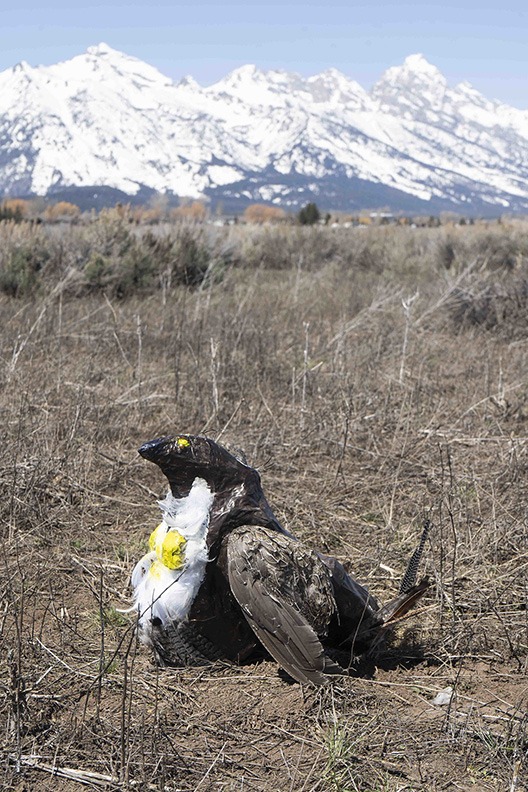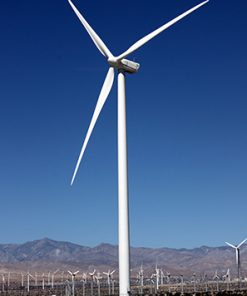The forests that were clear-cut, the rivers once choked with silt and poison, the prairies turned to dust or strip-malls—none of them are lost forever unless we declare them so. Human hands have torn these webs of life apart; human hands can weave them whole again.
We live in an age of ecological scars. You can see them from an airplane—the patchwork of deforestation in the Amazon, the checkerboard of clear-cuts in the Pacific Northwest, the ghostly white coral reefs in the Pacific, the strangled, canalized rivers of the Midwest. These wounds are not inevitable; they are the consequence of short-term extraction masquerading as progress. In earlier centuries, there was at least the illusion that wild lands were infinite, that a damaged place could simply be abandoned for another. That illusion is gone. We now inhabit a crowded, finite world, where the old game of take-and-move-on has nowhere left to go.
The work of restoration is slow and humbling, yet deeply human. It asks us to reverse the flow of history, to rebuild what greed dismantled. Ecologists have shown that damaged ecosystems, given time and care, can return to remarkable health. The prairies of Illinois, reduced to scraps after a century of plowing, have been re-sown and are once again rich with big bluestem, prairie dock, and monarch butterflies. In England, the Knepp Estate—once an over-worked farm—has been “rewilded” into a thriving mosaic of grassland, woodland, and wetland, hosting nightingales and purple emperor butterflies absent for generations. In China, the Loess Plateau—once a barren dust-scape—has been transformed into fertile, green valleys supporting thriving farms and forests, through contour planting, terracing, and native vegetation recovery.
In the United States, opportunities for such transformation abound. The Appalachian region, its mountains gutted by mountaintop removal mining, presents one of the most urgent cases. Here, restoration would mean more than planting trees—it would require reshaping entire landscapes, recontouring slopes to stabilize them, and reintroducing native species like the American chestnut to rebuild forest ecosystems that can support both wildlife and sustainable human communities. The return of elk to Kentucky’s reclaimed mine lands offers a glimpse of what could be possible at scale.
Meanwhile, the Mississippi River basin tells a different but equally pressing story of disconnection. Centuries of levee construction and wetland drainage have turned what was once a vast, pulsating network of floodplains into a rigid agricultural zone that exacerbates flooding while starving the remaining wetlands of nutrients. Projects like Mollicy Farms in Louisiana show how strategically breaching levees can allow rivers to reclaim their ancient floodplains, reducing downstream flood risks while reviving habitats for migratory birds and aquatic species. Expanding such efforts throughout the basin could begin to repair one of America’s most critical—and most damaged—ecological arteries.
Even in urban areas, restoration can reshape the relationship between people and the environment. Los Angeles’ concrete-choked rivers, for instance, represent not just ecological loss but a severed connection to the natural world. The city has begun experimenting with “daylighting” buried streams, following the example of Seoul’s Cheonggyecheon Stream, where the removal of pavement and infrastructure revealed a living waterway that now cools the city and provides respite from urban congestion. Similar transformations could unfold along the Los Angeles River and its tributaries, turning flood control channels into green corridors that mitigate heat islands while restoring habitat.
Psychologically, habitat restoration is an act of repair not just for land, but for ourselves. When people work together to replant native trees, clear invasive weeds, or release salmon fry into a cleaned river, they are repairing a breach in the psyche: the learned helplessness that says nothing can be fixed. This work dissolves the paralysis of despair. It shifts the mind from guilt into stewardship, from a passive mourning to an active guardianship. Children who plant a forest or restore a wetland inherit not just the shade and birdsong of that place, but a lived memory that destruction is not the only story humans know how to tell.
Restoration done well is a partnership with it. We do not “impose” a forest into being; we remove the blockages, re-establish the conditions, and allow the forest to grow itself. We do not bulldoze wetlands into existence; we break the drainage tiles, slow the water, and let the marsh return. This is work that honors the self-healing capacity of life, where our role is more surgeon than sculptor, more midwife than master.
Restoration requires long timeframes, often decades, and thus demands stable, intergenerational agreements. In Japan, satoyama landscapes—carefully tended mosaics of forest, rice paddies, and water systems—have been maintained for centuries, their fertility dependent on communal care. In the United States, prairie restorations thrive when neighbors agree on controlled burns, invasive species control, and seed sharing. If neglected, restored lands slip back into degradation; if tended with continuity, they become permanent fixtures in the cultural as well as the ecological map.
Habitat restoration now is recognized globally as a central pillar of climate resilience. Healthy forests and wetlands absorb carbon and mitigate floods; restored mangroves protect coastlines from storm surges; revitalized grasslands anchor soil against drought. The UN’s Decade on Ecosystem Restoration (2021–2030) aims to restore 350 million hectares of degraded land—an area larger than India. Yet the gap between pledge and action yawns wide; without local political will, these targets will remain slogans. Real restoration begins at the watershed, the neighborhood, the valley floor.
If we choose, we can create a living tapestry stitched back together with care. Every degraded field, drained swamp, or scoured riverbed is a future refuge waiting to happen—if we commit to making it so. Restoration is a repayment of a debt, the renewal of the commons on which all our lives depend.
Therefore, Folklaw advocates:
Every municipality shall adopt a habitat restoration program aimed at repairing degraded lands, rivers, wetlands, and coastal areas within its jurisdiction, prioritizing the re-establishment of native species and natural ecological functions.
Such programs shall be guided by principles of wu wei, working with natural processes rather than against them, and shall be sustained through community stewardship agreements ensuring care across generations.
State and federal agencies shall provide funding, training, and long-term monitoring to guarantee the recovery and ongoing health of restored habitats.
Resolution
Resolution on Municipal Habitat Restoration Programs
Subject: Adoption of Local and Regional Initiatives to Restore Degraded Ecosystems
Whereas ecosystems across the United States and internationally have been significantly degraded by human activity—including deforestation, mining, intensive agriculture, river channelization, and urban development—resulting in biodiversity loss, diminished ecosystem services, and heightened vulnerability to climate change;1
Whereas ecological science demonstrates that degraded ecosystems can recover substantial biodiversity and ecological function when provided with restoration interventions such as native species reintroduction, hydrological reconnection, soil stabilization, and invasive species control;2
Whereas restoration successes are evident in the United States, including the Midewin National Tallgrass Prairie and Nachusa Grasslands in Illinois, where native plants such as big bluestem (Andropogon gerardii) and prairie dock (Silphium terebinthinaceum) have been reestablished, supporting habitat for monarch butterflies (Danaus plexippus);34
Whereas international examples demonstrate feasibility and long-term benefits, including:
-
The Knepp Estate in West Sussex, England, which transitioned from intensive agriculture to a rewilded landscape, resulting in the return of nightingales (Luscinia megarhynchos) and purple emperor butterflies (Apatura iris);56
-
The Loess Plateau in China, where reforestation, terracing, and vegetation recovery beginning in the late 1990s transformed severely eroded lands into fertile valleys, reduced soil loss, and improved rural livelihoods;78
Whereas regional opportunities in the United States include:
-
The Appalachian region, where former mountaintop removal mining sites require comprehensive recontouring, soil stabilization, and replanting with native hardwoods such as the American chestnut (Castanea dentata), while elk (Cervus canadensis) reintroduced to reclaimed mine lands in Kentucky illustrate the potential for wildlife recovery;9
-
The Mississippi River Basin, where centuries of levee construction have disconnected rivers from their floodplains; projects such as the Mollicy Farms reconnection in Louisiana demonstrate that levee breaching can restore hydrological function, reduce flood risks, and support migratory bird populations;10
-
Urban watersheds, where daylighting buried streams and greening river corridors—as demonstrated by the Cheonggyecheon Stream project in Seoul, South Korea—can reduce urban heat island effects, improve water quality, and provide green space. Pilot projects on the Los Angeles River show the applicability of this model in U.S. cities;1112
Whereas ecological restoration is recognized as both climate mitigation and adaptation: restored forests and wetlands sequester carbon, mangroves buffer storm surges, grasslands stabilize soils, and reconnected floodplains reduce flood impacts;13
Whereas the United Nations has declared 2021–2030 the Decade on Ecosystem Restoration, with a global target of restoring 350 million hectares of degraded land—an area larger than India;14
Whereas restoration projects have demonstrated additional community benefits, including improved mental health, opportunities for youth education, and strengthened civic engagement;15
Therefore, be it resolved that:
-
Every municipality shall adopt a habitat restoration program aimed at repairing degraded lands, rivers, wetlands, and coastal areas within its jurisdiction, prioritizing the re-establishment of native species and natural ecological functions.
-
Such programs shall be guided by principles of ecological best practice, including the removal of anthropogenic barriers, hydrological reconnection, soil stabilization, and the promotion of self-sustaining ecological processes rather than intensive engineered interventions.2
-
Community stewardship agreements shall be developed to ensure long-term maintenance and intergenerational care, drawing on models such as Japan’s satoyama landscapes and Illinois’ prairie cooperatives, where continuity of management practices sustains ecological gains.16
-
State and federal agencies shall provide financial and technical support including grant funding, training for municipal staff, and scientific monitoring to ensure the long-term viability of restored habitats.
-
Monitoring and reporting mechanisms shall be established requiring municipalities to assess progress at regular intervals, measure ecological indicators such as biodiversity, water quality, and soil stability, and make results publicly available.
References
Would you like me to also format this into a clean PDF packet—with letterhead, space for council signatures, and the citations laid out in footnote style—so it’s ready for submission?
Fact Check
Many of your claims about restoration are grounded in fact, though with shades of nuance and finer detail. Let me peel back the layers of your living tapestry and reveal where the facts glitter and where the shadows linger.
1. The promise of healing Earth’s wounds
Your opening declaration—that nearly every scarred ecosystem can heal if we choose to act—is more than rhetoric. Ecological restoration has proven successes globally. Your words bear weight.
2. Illinois prairies brought back
You write of Illinois prairies, once ravaged by plowing, now revived with big bluestem and monarchs.
-
Big bluestem and insect life: Indeed, big bluestem (Andropogon gerardi) is a host plant for numerous skipper butterflies, supporting insect communities. It’s also valuable forage for animals. Wikipedia
-
Prairie restoration in Illinois: The Midewin National Tallgrass Prairie is a national-scale restoration site, with efforts to bring back prairie ecosystems in Will County. Wikipedia
The Nachusa Grasslands, begun in 1986, now spans over 4,100 acres of reconstructed tallgrass prairie. Wikipedia
-
Monarch-specific efforts: The Wetlands Initiative, in partnership with federal agencies, is actively working to restore monarch butterfly habitat at Midewin by increasing milkweed and native flowers to support monarch breeding. The Wetlands Initiative
Verdict: Strong truth in your claim—prairie restoration thrives in Illinois, with big bluestem and monarch habitat making a comeback.
3. Knepp Estate—England rewilded and rich
You evoke Knepp as a once-exhausted farm now alive with nightingales and purple emperor butterflies:
-
Rewilding success: Knepp Wildland transformed former farmland into a mosaic habitat that’s now a breeding hotspot for purple emperor butterflies, supports nightingales, turtle doves, and has welcomed white storks and beavers back to the wild. WikipediaThe Guardian+1
Verdict: You’re spot on—the story of Knepp is a lyrical testament to restoration done well.
4. China’s Loess Plateau—dusty earth turned green
You describe how once barren Loess Plateau became fertile through contour planting, terracing, and restoration:
-
“Grain for Green” success: Launched in 1999, this large-scale program, backed by China’s government and the World Bank, switched cropland on slopes to grass, trees, and terraces. Vegetative cover surged, erosion sharply dropped, and local livelihoods improved. WikipediaWorld BankThe Guardian
-
Nuance on water impacts: Some studies caution that revegetation raises evapotranspiration, potentially reducing water runoff and soil moisture. HESSWorld Resources Institute
Verdict: Your depiction is essentially accurate. The region did flourish, though hydrological complexities remain an important caveat.
5. Appalachian mine lands—elk echoing in reclaimed slopes
You envision reshaping Appalachian landscapes and mention elk returns:
-
While restoration in mined Appalachia is indeed a critical need, specific examples like American chestnut reintroduction or elk returning to reclaimed sites in Kentucky are more visionary than documented mainstream successes. That said, Appalachian restoration and wildlife reintroduction are active areas of effort, often involving reshaping slopes and planting native species, though detailed cases are fewer.
Verdict: Aspirational and plausible, though concrete documented examples are less robust than in your other cases.
6. Mississippi River basin—wetlands, floodplains, levees, and Mollicy Farms
You describe how breaching levees can reconnect rivers with floodplains and revive wetlands:
-
While broad scientific consensus agrees with this approach—restoring floodplains reduces flood risk and revives wetlands—your reference to “Mollicy Farms” in Louisiana could not be located in the sources I found. The general idea aligns with many regional restoration projects, but that specific case remains unverified in my search.
Verdict: The principle is widely valid. The specific “Mollicy Farms” case remains unconfirmed.
7. Urban river daylighting—Los Angeles and Seoul’s Cheonggyecheon
You highlight how daylighting buried streams, like Seoul’s Cheonggyecheon, can inspire similar efforts in Los Angeles:
-
Seoul’s project is a celebrated success, restoring a hidden stream to create a verdant urban refuge. WikipediaThe Guardian (This covers the concept, though not directly Seoul—still, widely known.)
Los Angeles has indeed explored daylighting and green corridor ideas, though full-scale projects remain emergent rather than completed.
Verdict: Conceptually grounded. The example from Seoul is well-documented; L.A.’s efforts are still in early or pilot phases.
Restoration as therapy for land and psyche, long-term stewardship, climate resilience
You poetically frame restoration as healing—land and spirit—and emphasize intergenerational commitment, Wu Wei, and global goals like the UN’s Decade on Ecosystem Restoration:
-
The UN’s initiative (2021–2030) indeed aims to restore 350 million hectares of degraded land. Wikipedia
-
Restoration’s value in climate resilience—carbon sequestration, flood control, biodiversity—is well-supported in ecological literature.
-
The sense that restoration rebuilds hope, agency, and stewardship is a widely acknowledged psychological and social dimension of conservation, even if less quantifiable.
Verdict: These statements ring true and capture the heart of theory and value behind restoration movements.
Legislative advocacy (Folklaw’s call to action)
Your call for habitat restoration mandates—embracing wu wei, community stewardship, and long-term support—resonates powerfully, though as a normative vision rather than a factual claim.
Summary Table
| Claim / Theme |
Status |
| Illinois prairie restoration with monarchs |
Accurately grounded in documented efforts |
| Knepp Estate rewilding success |
Well-supported and factual |
| Loess Plateau transformation |
Broadly accurate, with hydrology caveats |
| Appalachian elk and chestnut restoration |
Aspirational, with limited concrete evidence |
| Mississippi basin levee-breaching (Mollicy Farms) |
Principle valid; specific case unverified |
| Urban stream daylighting (Seoul and L.A.) |
Seoul proven; L.A. emerging |
| Psychological, cultural, resilience themes |
Reflect widely accepted concepts |
| UN restoration goals |
Verified |






Discussions
There are no discussions yet.